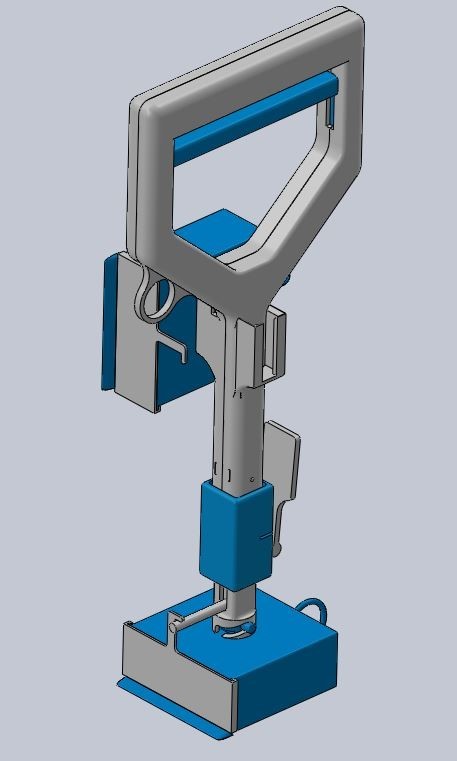Space bound

Feb 2, 2017
The final frontier. The great unknown. The cosmos. All these words are used to describe space, or the infinitely expanding vacuum in which Earth sits and orbits the sun day after day, month after month and year after year.
Since man has gained the technology to do so, conquering the outer reaches of space has been a dream and a goal for many. The idea of being the first man or women to step foot on Mars is slowly becoming a reality for some people, as companies like NASA and Spacex develop massive technologies such as reusable rockets, capsules that are capable of spending over a year in space flight and technologies that will make creating a sustainable environment possible. But with all these big technologies being designed, developed and tested, it’s easy to forget the smaller ones that are just as vital to furthering research, like a rocket that is capable of vertical landing.
A team of Grand Valley State University students is involved in a NASA competition aimed at designing, developing and testing a tool that solves a problem with current space exploration. Teams from colleges and universities across the country are working on their own designs to be tested at NASA’s Neutral Buoyancy Laboratory (NBL) in late May and possibly picked up by the organization to be used in future missions.
This process is easier said than done.
“We’re still in the design process right now,” said Brianna Forsthoefel, a GVSU junior and the team leader. “We’re just working out some of the bugs with it. We just printed some of the parts this past week and figured out there’s a couple things we’ve got to change.”
The contest requires the teams to build one of three different tools: a device that anchors an astronaut to the surface in micro or zero gravity, a device that allows astronauts to take a sample of the subsurface of a celestial body and a device that allows astronauts to take a sample of the surface (1 millimeter deep, as defined by NASA). The GVSU team is developing the third option and, as GVSU junior and team member Jacob Stephens put it, the design is quite simple.
“It’s similar to one of those (dinosaur) heads, and you pull the handle and it opens the mouth,” Stephens said. “That’s kind of how (the device) works.”
The device itself has a containment unit on the bottom that, after it is full, can be replaced with another containment unit with a quarter turn, making sample-gathering easy for those wearing a full space suit, Forsthoefel said.
The device’s simple design was actually noted by NASA when they approved it. The simplicity helps in space when an astronaut doesn’t have access to a lot of tools or ways to fix issues, Stephens said, so the less there is to break, the easier the device is to repair and use.
When the team travels to the NBL, they will take their finished product and give it to trained NASA divers who will have to complete a series of tasks to test its usability. All the while, the team will act as mission control and guide the diver through the process.
“It’ll be really interesting, and we’re all really looking forward to it,” Forsthoefel said. “It’s a great opportunity.”
Although this is the first time the team will be going to the NBL, this is not the first time that a GVSU team has attempted to enter this contest. Last year, the team attempted to develop a tool, but due to a lack of experience and a key member’s scheduling conflicts, the project fell through.
This year, however, Forsthoefel is optimistic because the team is now more experienced and dedicated to seeing the project through to the end, whether that means getting the device picked up for space exploration or not.
“Being able to test the waters in a lot of different areas in aerospace and everything we’ve encountered, including design and everything there (is) to testing, it’s just been really eye opening,” Forsthoefel said. “You never know what you could end up with.”

























